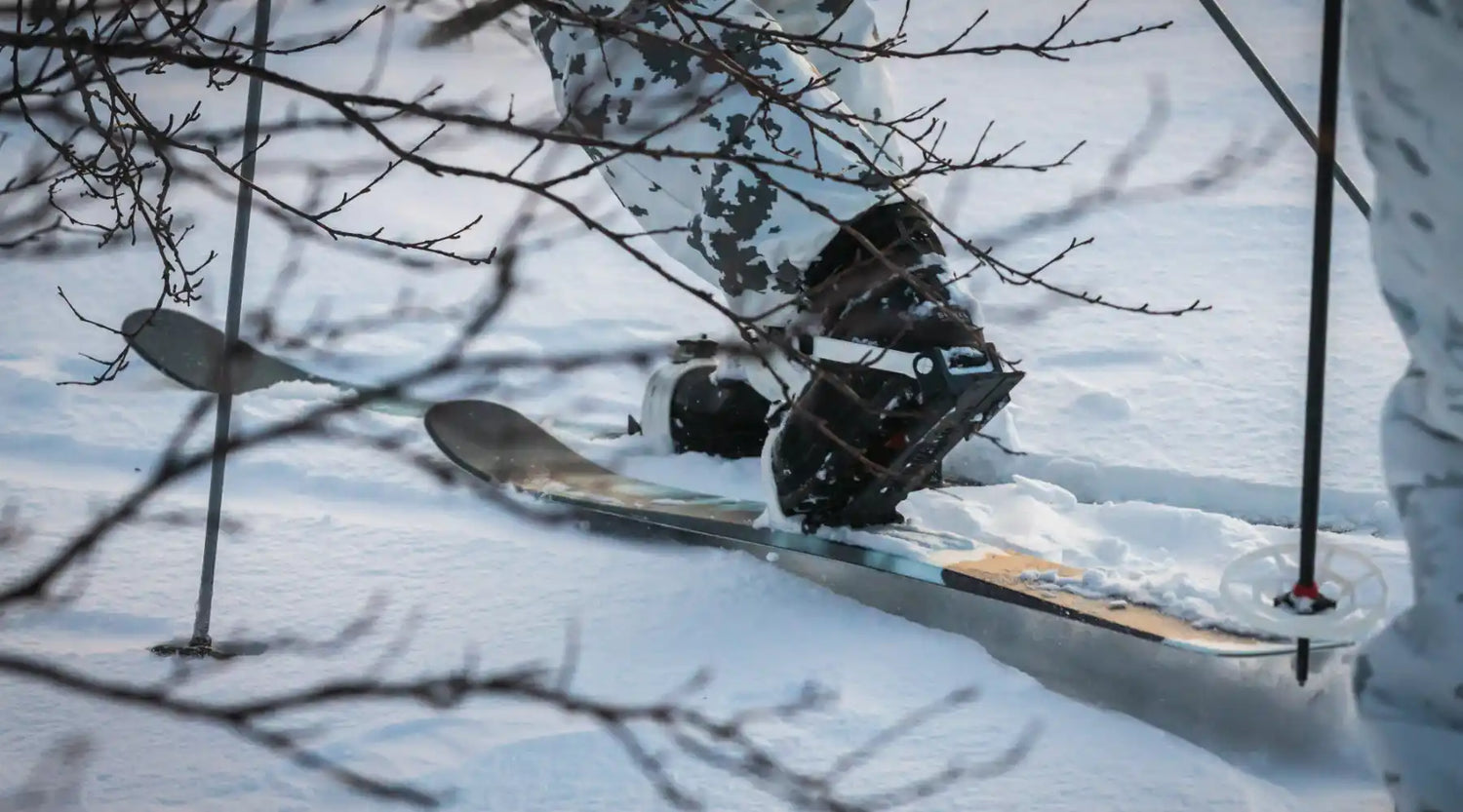We get it, winter hunting is more than about just the hunt. It’s about those frosty mornings in a silent forest, time spent in good company (both two and four-legged) and living the way nature intended. We also understand how diverse an activity winter hunting can be. From moving through deep snowdrifts to following tracks across rocky, wind-blown summits, you need a boot that can really handle it all. So, what makes a good winter hunting boot anyways?

Supportive: Whether skiing or walking, moving over variable terrain requires a supportive boot. The most important for use with Skinbased skis includes good ankle support and torsional rigidity. Ankle support, which can help protect the joint when moving with heavy loads, is often achieved through a high boot cuff with extended lacing. Torsional rigidity, or lateral stiffness, is esspecially important when moving across steeper ground. This is often gained through a tall boot cuff and a supportive midsole.
Flexible-soled: There is a reason that the cold-climate indigenous cultures used soft-soled boots. In addition to being a necessity for skiing with OAC EA 2.0 Bindings, flexible-soled boots, those that naturally flex at the toes/ball of the foot when walking, will be significantly warmer than fully rigid-soled boots. Highly undervalued, the ability to move and flex your feet and toes inside your boots will bring additional warmth to the furthest reaches of your extremities. This is all the more important when waiting for your shot, as being motionless greatly reduces the amount of heat your body will naturally produce.
Large enough: A boot that fits too snugly, such as a summer hunting boot packed with an extra sock, will limit circulation and blood flow, drastically reducing foot warmth. Going up a size from your normal, three-season hunting boot will not only allow extra room for thicker socks, but also allow for a pocket of air to be trapped in the boot, as well. This “dead air space” will act as an extra insulator between your (toasty warm) foot, and the frigid winter environment that surrounds it.
Boot fit: Lastly, its always important that the boot fits your foot. no matter how great the boot looks on the shelf, or who gave it five-stars online, if the boot doesn't fit, keep looking.
Boots are one of the few items of equipment that can really make or break a trip. Get it right, and you shouldn't have to worry about it for seasons to come. Get it wrong, and you'll be miserable by the end of Day 1. Take your time, find something that really fits, keep in mind the advice above, and you'll (literally) start your winter hunts off on the right foot.


0 comments